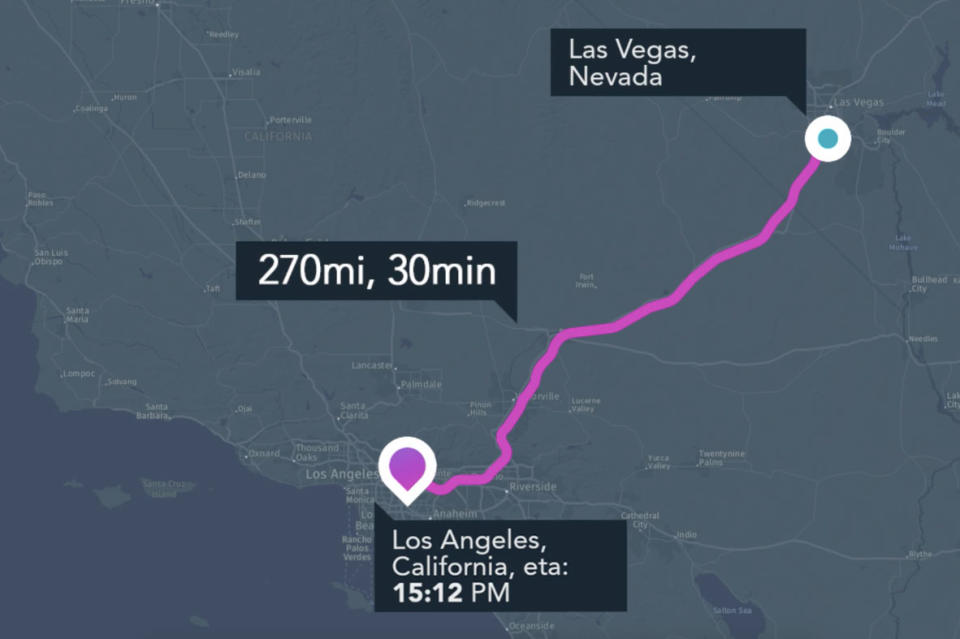Hyperloop One and Here made an app for imaginary Hyperloops
Learn how fast you could theoretically travel between cities.
Virgin Hyperloop One has teamed up with mapping company Here to build an app that lets you pretend that Hyperloops are real. The app is designed to be your transportation portal in a future where vacuum tubes are connecting all of our major cities as one. Imagine a version of Citymapper that let you choose between cars, planes, trains or Hyperloops as you jump between, for instance, Las Vegas and LA.
In this future, passengers can schedule their entire journey, from their front door to their destination, from inside the same app. So you could get a Lyft to the Hyperloop portal, and then have another ride-sharing vehicle waiting for you as soon as you disembark. The app also offers turn-by-turn directions, letting you navigate airport terminals and public buildings quickly and efficiently. On that subject, users can pick their journey based on one of three criteria: speed, cost or the amount of carbon emissions.
Right now, the app is little more than a demonstration of Here's software development platform that will act as a one-stop shop for all your transport needs. Imagine a single place where you can build out journeys, and pay for them, without lots of needless fuss. It's also a neat way of both selling would-be users on the idea of Hyperloop and seeing how much demand there is for each route. At least, it will be when it's made available to the public at some point this year.
Here at CES, Virgin Hyperloop One is also letting members of the public get a look at its XP-1 test pod for the first time. The pod famously managed to reach speeds of 240 miles per hour in the DevLoop, the company's 500-meter-long test track in the Nevada desert. We don't expect that figure to get much bigger, since there's only so fast you can travel in a tube that's just 500 meters long. But the company's Josh Giegel told us earlier this year that he sees no need to extend the DevLoop, since the next tube to be built will be a real one.
Click here to catch up on the latest news from CES 2018.


